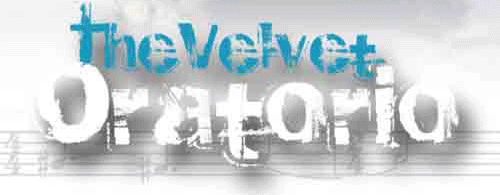![]()


Theater of Ideas:
scientific, political, philosophical,
and above all theatrical
"Exquisitely ingenious"
- The New York Times
| home |
| about us |
| reviews |
| past productions |
| books |
| blog |
| contact us |
| donate |
| join our mailing list! |
|
The Who, What, and Where of the Velvet Revolution as portrayed in The Velvet Oratorio (for a timeline, click here)
Ladislav Adamec: The Prime Minister of Czechoslovakia during the time of the Velvet Revolution. A member of the Communist Party. Edvard Beneš: a member of the Czechoslovak National Socialist Party, he became the 2nd President of Czechoslovakia (after Masaryk) in 1935. He opposed Germany's claim to the German-speaking Sudetenland in 1938. In October, the Sudeten Crisis brought Europe on the brink of war, which was averted only as France and Great Britain signed the Munich Agreement, which allowed for the immediate annexation and military occupation of the Sudetenland by Germany. After this event, under German pressure, Beneš was forced to resign in October 1938. Brno: The second largest Czech city. The Civic Forum: an organization formed November 19, 1989, in response to the November 17 march and the ensuing events. It began as an almost impromptu gathering of dissidents in the basement of the Laterna Magicka and came to represent the revolution, with Václav Havel as its leader. Although not envisioned as a political party, it later transformed into one. Shirley Temple Black: The world famous child star of movies such as The Little Princess and Heidi was in Prague in 1968 and was able to use her movie star status to help smuggle out dissidents during the Soviet invasion. Soon afterwards she began a diplomatic career: after serving as a Nixon appointee to the United Nations, she was appointed Ambassador to Ghana, then Chief of Protocol of the United States by President Ford. The peak of this career came with the appointment by President George H.W. Bush to be United States Ambassador to Czechoslovakia (August 23, 1989 – July 12, 1992). She commented about her ambassadorship, “That was the best job I ever had.” Alexander Dubček: A Slovak politician who, as leader of the Communist Party and therefore of all Czechoslovakia, tried to liberalize the Communist regime in 1968. His slogan was “socialism with a human face,” and his numerous reforms led to what came to be referred to as Prague Spring. However, that period of reform ended quickly, as the Soviets invaded in August of 1968 in order to reverse them. Dubček was quickly replaced by Gustáv Husák, and didn’t emerge again until the Velvet Revolution, at which time he was an early favorite to become the new President. Though it became clear the public preferred Havel for that role, Dubček was elected first speaker of the federal parliament and served until his death in 1992. Jan Fojtik: communist ideology chief in Czechoslovakia Václav Havel: playwright, political dissident, and the former president of the Czech Republic. Deemed “subversive,” his writings (and his name) were banned by the Communists in the 1970s. As primary author of the freedom-claiming, repression-denouncing Charter 77, he later founded and led the Civic Forum that led the struggle to drive them from power. He was elected president of Czechoslovakia on December 28, 1989 and in 1993, president of the newly independent Czech Republic. He served two terms in that position, until February 2003. Miloš Jakeš: The Communist party leader in Czechoslovakia, replacing Husák in 1987. He was forced to resign due to the events of the Velvet Revolution, and was briefly replaced by Karel Urbánek, who held the position until Havel’s election. Kosice: A Slovak city located in the Eastern part of that region Laterna Magicka: A theater in Prague that served as the improvised headquarters of the Civic Forum Tomáš Garrigue Masaryk: The first President of Czechoslovakia after the nation was formed following the collapse of the Austo-Hungarian Empire in World War I. An almost legendary figure in Czech politics, he held office until 1935. Jan Opletal: Medical student killed in Prague on October 28,1939 by Nazi storm troopers while protesting the German occupation of Czechoslovakia. His burial became an anti-German demonstration and the anniversary of his death continues to be honored. Pardubice: A small Czech city, also referenced in Havel’s Audience Plzen: A historical Czech city in western Bohemia. People Against Violence: The Slovak counterpart to the Civic Forum Prague Spring: A period of reform in Czechoslovak history, spanning January 1968 until August of that same year, when Soviet forces invaded Pargue and ended the reforms. The reforms were led by Alexander Dubček. Prešov: The third-largest Slovak city Martin Šmid: A supposed mathematics student rumored to have been killed by the police during the November 17 march. In fact, no one was killed in the march Peter Uhl: A Czech dissident and journalist. Wenceslas (Square): One of the biggest public squares in Prague, and the main gathering space during the Velvet Revolution. In some ways it is more of a long boulevard than a square. Hundreds of thousands of people gathered here during the Velvet Revolution.
|
